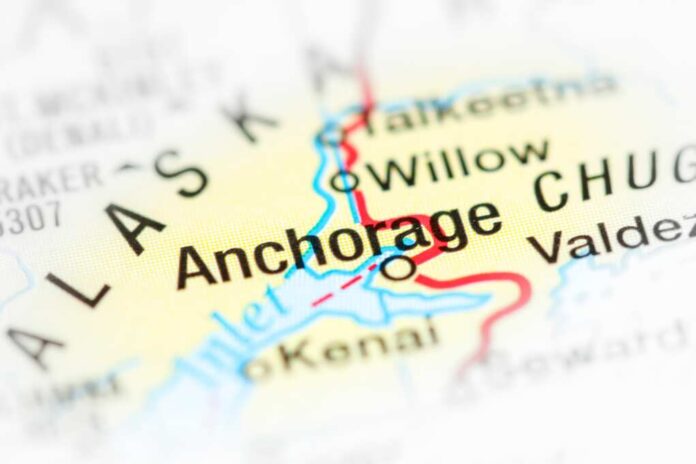
Mount Spurr’s seismic activity surges, raising eruption fears and potential disruptions for Anchorage residents.
At a Glance
- Mount Spurr, located 80 miles west of Anchorage, is experiencing more than 100 earthquakes per week, marking the highest seismic levels recorded in 2024.
- The Alaska Volcano Observatory has kept the volcano at a Yellow Alert Level due to signs of elevated unrest.
- Elevated CO₂ and SO₂ emissions detected on May 23 suggest continued magma presence beneath the summit and Crater Peak.
- Ground deformation, seen earlier this year, has paused since mid-March, indicating a stalled shallow intrusion.
- Emergency officials in Anchorage have urged residents to prepare for possible travel disruptions and ash exposure.
Signs of a Restless Giant
Nestled in the Aleutian Arc, Mount Spurr has seen a dramatic surge in seismicity, with over 100 shallow earthquakes now recorded weekly—a level not seen since monitoring began in early 2024, according to data from the Alaska Volcano Observatory. This activity has prompted the observatory to maintain a Yellow Alert Level, signaling volcanic unrest above normal background levels, though not yet imminent eruption.
Alongside the earthquakes, scientists noted significant emissions of volcanic gases, including CO₂ and SO₂, from both the summit crater and the Crater Peak vent during a May 23 field campaign. These emissions often signal the presence of magma near the surface. Despite the active gas release, officials report that the ground deformation observed earlier in the year has stalled since March, suggesting the shallow magma intrusion has temporarily ceased.
Watch a report: Mount Spurr Volcano Update.
Eruption History and Emergency Plans
Though the main summit of Mount Spurr has not erupted in over 5,000 years, its more volatile Crater Peak vent last erupted in 1992—an event that blanketed Anchorage in ash and disrupted regional air traffic. A similar eruption today could produce ash plumes up to 50,000 feet, posing risks to health, infrastructure, and commercial aviation.
In anticipation, the Anchorage Office of Emergency Management raised the city’s emergency readiness level to Level 2, advising residents to stock emergency kits and be prepared for delays in summer travel. Local schools are also taking precautions: the Anchorage School District has activated its Emergency Operations Center and published shelter-in-place guidance in case ashfall disrupts city operations.
Despite the heightened alert, scientists like AVO geophysicist Matt Haney caution against panic, noting that an eruption—while possible—would likely be preceded by clearer warning signs. Haney added, as reported in the New York Post, “We’re not out of the woods yet.”
Monitoring and Mitigation Efforts
The AVO continues round-the-clock monitoring of Mount Spurr, using real-time instruments and satellite data to detect changes in seismic activity, ground movement, and gas emissions. When weather allows, aerial surveillance will complement these efforts, offering visual assessments of crater conditions and thermal anomalies.
While no communities lie directly within the blast zone, the state’s emergency preparedness agency warns that indirect effects—such as flight cancellations, poor air quality, and infrastructure impacts—could still affect Anchorage and surrounding regions. Residents are encouraged to stay informed through official updates and heed any evacuation or shelter-in-place directives.




















